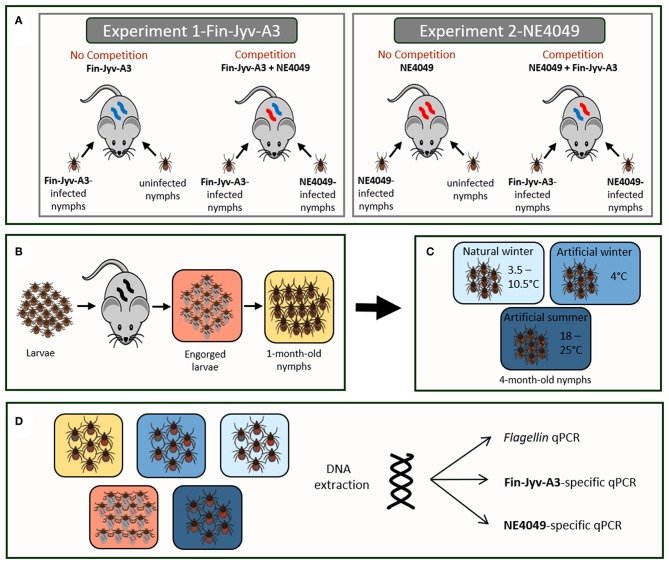Figure 1.
(A) The study was divided into two competition experiments that differed in the focal strain. In experiments 1 and 2, the focal strain was Fin-Jyv-A3 and NE4049, respectively. Each experiment was divided into two groups: no competition (infection with the focal strain only) and competition (infection with both strains). The sample size of each group was 10 mice. In the no competition treatment, each mouse was infected with 5 nymphs infected with the focal strain and 5 uninfected nymphs. In the competition treatment, each mouse was infected with 5 nymphs infected with strain Fin-Jyv-A3 and 5 nymphs infected with strain NE4049. (B) At 34 days post-infection, the mice were infested with ~100 larvae. Engorged larvae were allowed to molt into nymphs under laboratory conditions. (C) One month after the larva-to-nymph molt, the 1-month-old nymphs were exposed for 3 months to one of the three seasonal treatments: natural winter, artificial winter, and artificial summer. (D) Ticks were sacrificed at three different ages: engorged larvae, 1-month-old nymphs, and 4-month old nymphs. Only the 4-month old nymphs had been exposed to three different seasonal treatments (natural winter, artificial winter, and artificial summer). DNA was extracted from all ticks and the total number of spirochetes in each tick was estimated using flagellin qPCR. For the co-infected ticks, the abundance of strain Fin-Jyv-A3 and strain NE4049 was estimated using a strain-specific qPCR that targeted the ospC A3 allele and the ospC A10 allele, respectively.

